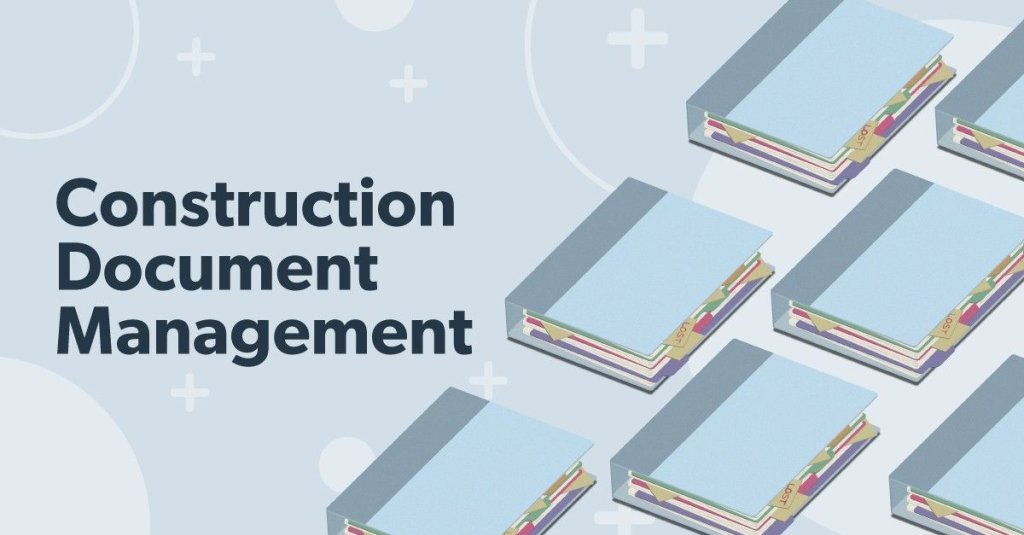Architect's Guide to Enhancing Construction File Administration for Effective Job Implementation
In the complex globe of style and construction, the efficient monitoring of task documentation stands as a cornerstone for success. Designers are charged with handling a myriad of illustrations, records, requirements, and contracts, all crucial components for bringing a project to fruition. However, the process of organizing, sharing, and maintaining these files can typically end up being a labyrinth of ineffectiveness and troubles otherwise taken care of diligently. By exploring organized strategies, cutting-edge tools, and market ideal methods, designers can not only simplify their paper administration processes but additionally lead the way for more reliable job execution. Allow's navigate through the vital methods and services that can revolutionize just how designers handle construction paperwork, ensuring projects are provided with precision and timeliness.
Significance of Efficient File Management
Why is reliable document management important for architects in the building market? Efficient file monitoring is crucial for engineers in the building and construction sector as it plays a crucial duty in making certain the effective implementation of projects. Architects handle a large range of documents, ranging from layout illustrations and specs to permits and contracts. Correct company and administration of these documents are essential to maintain project timelines, make certain conformity with policies, and assist in reliable communication amongst project stakeholders.

Efficient file administration allows designers to gain access to important details promptly, track project progress accurately, and reduce dangers related to omissions or errors. By executing structured paper administration procedures, engineers can improve partnership with customers, professionals, and various other team participants, resulting in boosted project results and customer contentment.
In addition, reliable file administration helps architects maintain a comprehensive task history, allowing them to utilize past lessons and experiences learned for future tasks. In today's fast-paced construction industry, where prompt decision-making and info sharing are paramount, reliable file management is a foundation for success.
Techniques for Simplifying Paper Organization
Effective document monitoring practices not just guarantee task success for designers in the building and construction market but additionally lay the structure for executing strategies for enhancing document organization. To simplify file company effectively, designers need to first develop a clear identifying convention for data and folders. Consistency in naming documents based on job phases, paper types, and pertinent info will facilitate simple retrieval and lower complication.
Utilizing cloud-based storage space solutions can also boost record organization by supplying a centralized place for all project-related data - construction document management. This permits group participants to access the most updated papers from anywhere, advertising cooperation and performance. Applying variation control systems even more refines file organization by tracking adjustments, preventing contrasting edits, and making certain that the current variations are always available
Moreover, creating a sensible folder structure with designated subfolders for various record classifications, such as drawings, requirements, and agreements, can simplify paper management procedures. Consistently assessing and purging repetitive or out-of-date files will certainly assist keep a lean and orderly document database, ultimately improving efficiency and task results.
Leveraging Technology Equipment for Collaboration
In the world of modern-day architecture, architects are increasingly relying on advanced technology devices to foster seamless cooperation amongst job stakeholders. Cloud-based systems such as BIM 360 and Procore permit real-time access to project documents, enabling engineers, customers, and service providers to team up properly no matter of their physical place.
Virtual layout and building and construction (VDC) software program like Revit and AutoCAD Design enable engineers to produce comprehensive 3D models that can be shared and modified collaboratively. This real-time partnership enhances layout control, visualization, and precision, resulting in better decision-making throughout the task lifecycle. In addition, interaction devices like Slack and Microsoft Teams straight from the source supply instant messaging, documents sharing, and video conferencing capacities, promoting smooth communication amongst team participants and stakeholders.
Making Sure Accuracy and Variation Control

Efficient version control also aids in taking care of paper approvals and ensuring that just licensed workers make adjustments. Designers ought to develop clear protocols for documenting modifications, including timestamps and customer identification, to develop an audit path for accountability. Frequently communicating with the task team concerning version updates and adjustments is vital to prevent complication and maintain placement throughout the construction procedure.
Ideal Practices for File Sharing and Accessibility
Having actually developed a durable system for variation control in building and construction record monitoring, engineers can currently concentrate on optimizing document sharing and access methods to enhance partnership and effectiveness among job stakeholders. These systems supply real-time accessibility to task papers, making it possible for group participants to watch, modify, and comment on documents all at once.
Additionally, carrying out role-based accessibility control is crucial for keeping information safety while promoting collaboration. Assigning various approval levels to staff member makes sure that sensitive information is just accessible to accredited workers. On a regular basis updating access approvals based upon project needs and group modifications is essential for maintaining information honesty.
Integrating job monitoring software application with file sharing systems can also simplify process. This integration permits seamless you can check here interaction, job tracking, and record administration within a solitary interface, lowering the requirement to switch over between numerous tools. By adhering to these best methods, architects can develop a more effective and joint file sharing setting, ultimately causing effective project execution.

Final Thought
To conclude, efficient construction document management is critical for effective job execution. By implementing approaches for company, leveraging innovation tools for cooperation, making certain precision and version control, along with complying with best practices for record sharing and gain access to, designers can streamline their operations and boost total task effectiveness. Focusing on these elements of record monitoring will result in smoother project implementation and far better end results for all stakeholders entailed.
Effective document management is important for architects in the construction sector as it plays a crucial function in making sure the successful implementation of jobs. construction document management. Correct organization and administration of these documents are important to maintain job timelines, guarantee conformity with regulations, and promote efficient communication amongst job stakeholders
Efficient document monitoring practices not just guarantee task success for designers in the construction market but likewise lay the structure for implementing techniques for simplifying document organization. One essential method is developing a central document repository where all team participants can access the most recent variations of illustrations, specifications, and other job papers.Having actually developed a durable system for variation control in building and construction file monitoring, designers can currently focus on maximizing record sharing and gain access to techniques to boost cooperation and performance among project stakeholders.
Comments on “Simplify Your Process: Construction Document Management Made Easy”